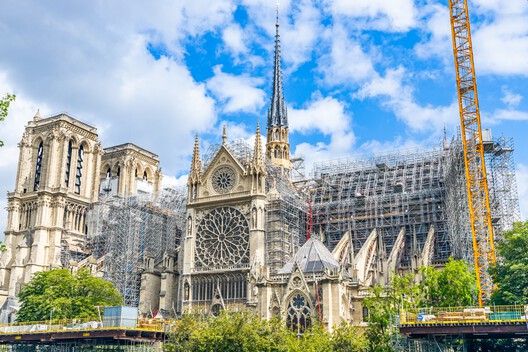Beauty After Quarantine

Illustration by Avril Maffei
Low self-esteem affects millions of people around the world, and issues regarding body image are undoubtedly one of the most common topics among teenagers. With the increased use of social media during quarantine, awareness regarding adolescents struggling with self-esteem issues has increased too. The Talon set out to explore the causes of this lack of self-esteem and the consequences it presents.
A 2019 online survey conducted by the Mental Health Foundation highlighted that out of 4,505 adults in the U.K., 20% felt shame, 34% felt down and 19% felt disgusted in relation to their body image. In fact, 13% of the surveyed adults experienced suicidal thoughts by concerns about their body image. Likewise, 37% of the 1,118 teenagers felt upset, and 31% felt ashamed of their bodies. One in five adults and 40% of teenagers informed that social media caused them to worry about their body image. Considering the statistics, the concerns of body image can lead to consequences are significant, and the worsening of these factors can be provoked by the use of social media and exposure to unrealistic bodies.
A lot of people, particularly teenagers, couldn’t connect with their friends due to the implications of the pandemic and decided to turn to social media to get through the tough times. However, this increased use of social media displayed downsides such as the reinforcement of unattainable perfection. Anne Marie O’Melia, chief medical officer and chief clinical officer at the Eating Recovery Center in Denver (AAP), asserts that “young people are comparing themselves to an unrealistic and often impossible standard, which can lead to dangerous behaviors in an attempt to achieve something unachievable.” With the pressure of having an “ideal body,” teenagers are likely to put their health in danger and develop eating disorders. The long-term effects of these disorders such as anorexia nervosa or binge eating include cancer, diabetes, and organ failure, and the outcomes on mental health can also lead to suicidal thoughts.
The situation for body image was already critical before the start of isolation, but the beginning of quarantine added even more pressure for people to look acceptable through the lens of beauty standards. Assistant professor of psychology Ilyssa Salomon stated on Elon News that the source of negativity and concerns about body image can be phones. Especially with quarantine and virtual learning, students are likely to spend an uncontrolled amount of time on technology. As a result of the excessive use of social media, unrealistic body standards and unreachable expectations have been set through a lack of diverse body representation. The strict exposure to bodies that fit beauty standards conveys the idea that they are common and normal, meanwhile, others are rarely visible and deemed not as beautiful. Furthermore, digital manipulation of photos remains prevalent yet underestimated as a contributor to the creation of an idealized beauty standard. Ultimately, efforts to strengthen and achieve the impossible beauty standard create a distorted view of what normal bodies look like. Since the unrestricted use of the internet has led to concerns about physical appearance, The Talon surveyed students from the Graded community to discuss the effects of beauty standards.
When asked about beauty standards, 10th grader, Amanda Coimbra, stated that she recommends not to “push yourself down, being happy with yourself is what matters.” Sophomore Filipa Almeida asserted that “it makes you like or dislike ourselves because we are always being compared to others.” Of seven students interviewed, all of them responded that their appearance was of significant importance: from 1 to 10, all students chose six or higher. Not only that, but all of them also stated that they believe other people mostly care more about their appearance than other features. Valentina Guidoni, another high-schooler, stated that “beauty standards can be very damaging for people who don’t fit into them; it can ruin their self-esteem since it can change the way they are treated in daily life in comparison to others.” A point brought up by Isabella Audi (Grade 10) is that “beauty standards have pretty much always been eurocentric which [she] do[es] believe to be a form of oppression against people of color.”
The Talon also surveyed the high-school counselor Ms. Jen Kantor to discuss beauty standards and eating disorders. When asked about the importance of physical appearance, she answered “a lot, but it varies from person to person.” Not only that but there seems to be a norm of looking a “certain way,” and students who “don’t look like that feel like there’s something wrong with them because they don’t look like the majority of students here.” When asked how others can help with the recovery of eating disorders, she answered that people could be “mindful about what they say.” The self-deprecating comments about your own body have “a very high potential to have a big impact on someone near you.” She asserts that “the best way to help is for all of us to move away from making comments about physical appearance.”
To add, when asked about the eurocentrism of beauty standards, that is, the fact that the norm for beauty in society is mostly based on white features while other ethnicities are not considered part of the standard, Kantor agrees that beauty expectations are a way of oppression against people of color. She adds that “around the world, we see the long-term impacts of eurocentric beauty standards. You could be in the heart of Nigeria and buy skin bleaching cream.” She also informs that the women who receive the most fame have some eurocentric features, and “these are the ramifications of colonization and the ramifications of white supremacy.” She also states that “if you go into the store and look at magazines, or if you go anywhere, you only see a certain kind of beauty represented. It has a deep impact on people of color when they never see themselves as the hero, when they never see themselves as the princess, when they never see themselves as the main character in the story, in books, in magazines, in movies around them, they certainly would naturally feel like there’s something wrong with them.”
By creating a norm where a great majority of the population doesn’t fit in, it can be used as a marketing strategy to sell products that promise to change their appearance to fit into an unrealistic result. The underrepresentation of people of color in beauty is another factor that leads to the common misconception that being attractive is only possible for white people. The most prevalent aspects of what the media promotes to be ‘beautiful’ rely on body-shaming and image idealism. Not only that but profiting off of the insecurities of people everywhere by selling products and promoting inaccurate results.
The standards of beauty cover racism and the misbelief that only certain features can exude confidence. Additionally, it is rooted in body-shaming and results in the development of eating disorders, possibly leading to serious physical and mental health issues. With the intervention of the internet and the isolation of quarantine, teens are exposed to unreachable expectations and manipulated media.
AAP, NEDA, Mental Health Foundation, Elon News, Jed Foundation, Novelly

Luiza is back for her second year as a Talonista, this time as an editor and writer for the News section. She strives to share knowledge about the world...









